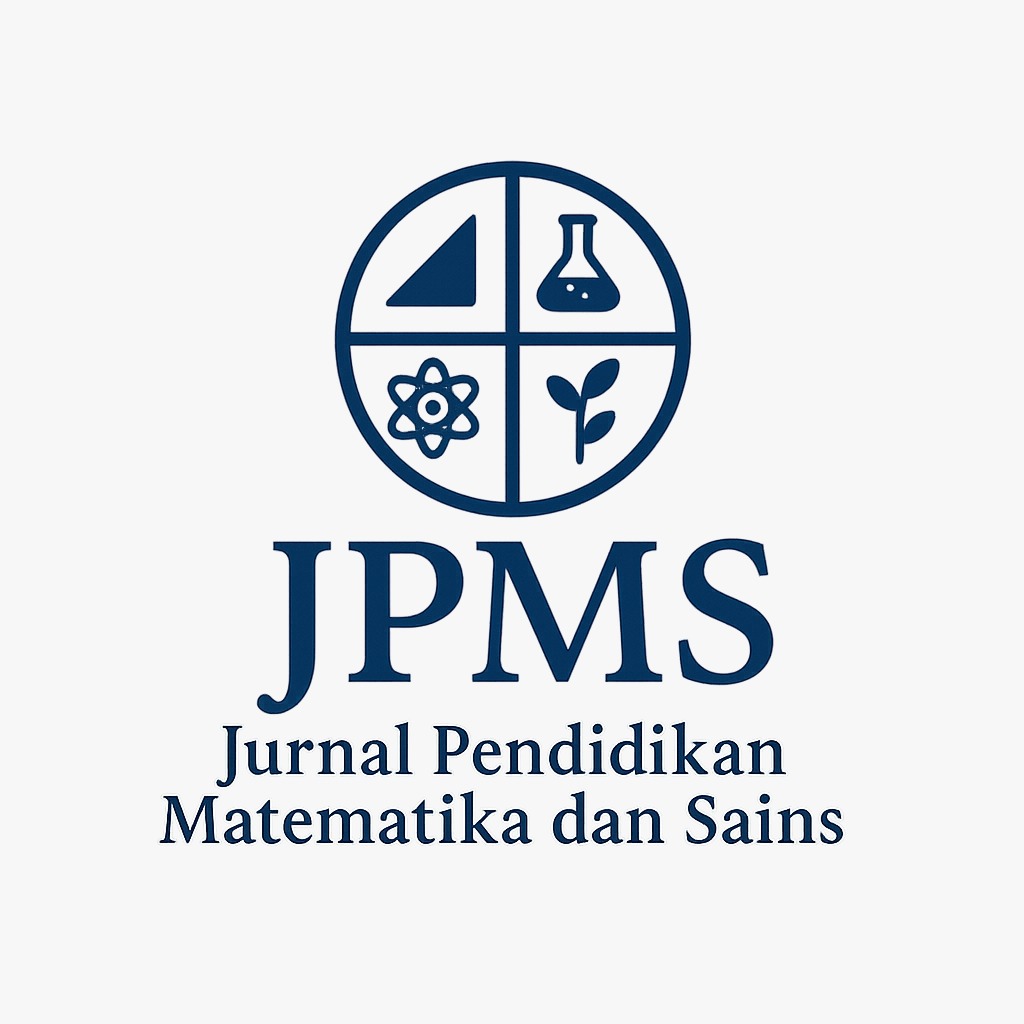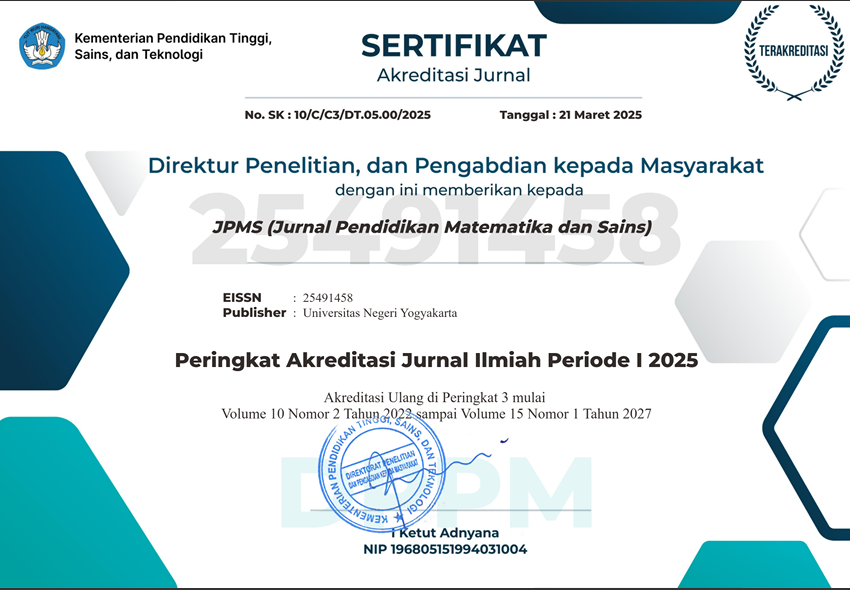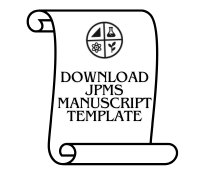Pengetahuan Parsial: Representasi Guru pada Relasi dan Fungsi
DOI:
https://doi.org/10.21831/jpms.v8i1.19648Keywords:
pengetahuan matematis, representasi, relasi, fungsiAbstract
Pengetahuan representasi merupakan indikator pengetahuan matematis guru sebagai salah satu tolok ukur profesionalitas guru. Tujuan studi kasus ini untuk mengetahui kemampuan representasi guru pada relasi dan fungsi. Studi kasus ini menggunakan pendekatan kualitatif. Studi kasus ini dilakukan pada 6 subjek penelitian (kategori H (High), M (Midle), L(Low), dan VL (Very Low)) yang dipilih dari 314 peserta UKG Kabupaten Blitar tahun 2015. Hasil tes dapat dikelompokkan menjadi 3 kelompok. Studi kasus ini menunjukkan bahwa pengetahuan representasi geometris guru masih kurang. Pemahaman relasi dan fungsi masih bersifat parsial. Temuan lainnya adalah bahwa pengetahuan matematis dipengaruhi oleh konsistensi penerapannya, kemauan untuk terus memperdalam ilmu matematika, pengetahuan siswa yang dapat memicu kreativitas guru untuk menemukan cara efektif agar siswa bisa memahami materi. Sedangkan untuk kemampuan representasi pada suatu materi , dapat dilatih melalui pembiasaan menyatakan relasi dan fungsi dalam bentuk aljabar, geometris, tabel, maupun diagram.
References
Adamu, L. E. (2015). The relationship between scores of mathematics knowledge and teaching practice of diploma mathematics students: A quest for quality assurance. Journal of Education and Practice, 6(19), 179-183.
Ball, D. L., Thames, M. H., & Phelps, G. (2008). Content knowledge for teaching: What makes it special. Journal of Teacher Education, 59(5), 389-407.
Baylor, A. L., & Ritchie, D. (2002). What factors facilitate teacher skill, teacher morale, and perceived student learning in technology-using classrooms?. Computers & Education, 39(4), 395-414.
Fennema, E., & Franke, M. (1992). Teachers' knowledge and its impact in: DA Grouws (Ed) Handbook of research on mathematics teaching and learning. Macmillan.
Loewenberg Ball, D., Thames, M. H., & Phelps, G. (2008). Content knowledge for teaching: What makes it special?. Journal of Teacher Education, 59(5), 389-407.
Manouchehri, A., & Goodman, T. (1998). Mathematics curriculum reform and teachers: Understanding the connections. The Journal of Educational Research, 92(1), 27-41.
Mohr, M. (2006). Mathematics knowledge for teaching. School Science and Mathematics, 106(6), 219-224.
Silverman, J., & Thompson, P. W. (2008). Toward a framework for the development of mathematical knowledge for teaching. Journal of Mathematics Teacher Education, 11(6), 499-511.
Stronge, J. H. (2018). Qualities of effective teachers. ASCD.
Zahner, D., & Corter, J. E. (2010). The process of probability problem solving: Use of external visual representations. Mathematical Thinking and Learning, 12(2), 177-204.
Downloads
Published
How to Cite
Issue
Section
Citation Check
License
Jurnal Pendidikan Matematika dan Sains allows readers to read, download, copy, distribute, print, search, or link to its articles' full texts and allows readers to use them for any other lawful purpose. The journal allows the author(s) to hold the copyright without restrictions. Finally, the journal allows the author(s) to retain publishing rights without restrictions
- Authors are allowed to archive their submitted article in an open access repository
- Authors are allowed to archive the final published article in an open access repository with an acknowledgment of its initial publication in this journal

This work is licensed under a Creative Commons Attribution-ShareAlike 4.0 Generic License.





